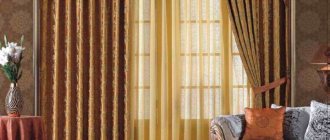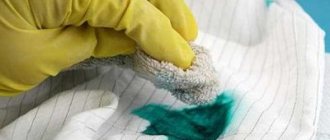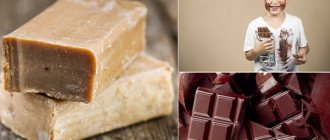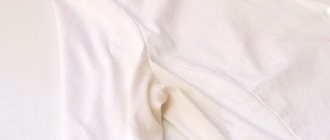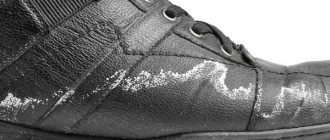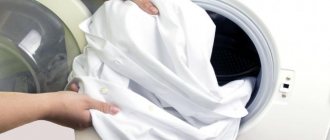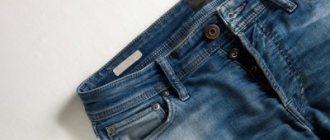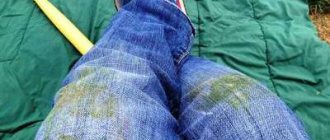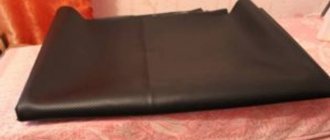Many buyers ask the question: how to distinguish natural silk from artificial silk? The question is more than relevant! After all, modern technologies make it possible to create analogues that are as close as two peas to real natural material.
The “trick” of substitution is often used by unscrupulous sellers: they offer fabric made from viscose, acetate and even pure synthetics (nylon, polyester, polyacrylic) at the price of more expensive real silk.
To avoid getting into trouble, you need to clearly understand the difference between artificial silk and natural silk. To do this, you need to know the characteristics of the materials. Better yet, arm yourself with one of the many reliable verification methods!
What is the difference between natural silk?
Natural silk is usually understood as a fabric that is made from silk thread extracted from the cocoon of the silkworm.
To obtain the coveted cocoons, insects are raised in special incubators. It is clear that the process is not quick and not cheap, which determines the relatively high cost of the original silk fabric.
Such well-known fabrics as satin, organza, satin, chiffon, foulard and a number of others are woven from natural silk threads. All these fabrics are highly breathable, hygroscopic, elastic, durable, and hygienic. They have a smooth glossy surface and fit pleasantly to the skin. They produce various types of women's and men's clothing, underwear, and household textiles.
Characteristics of silk
Knowing the characteristics of the material will help you quickly and correctly choose a quality canvas. The fabric, which consists of threads produced by the silkworm, has high breathability, good thermal conductivity, it is elastic and durable.
When you touch the body, you feel coolness. Such indicators make it possible to sew everyday and festive clothes, underwear, bed linen, kitchen utensils (tablecloths, napkins) from silk, and less often - upholstery for upholstered furniture. The material is no less popular as a lining for scarves, clothing, and decorative ribbons.
How are silk fabric analogues made?
The main and key difference between natural silk and artificial silk is that it is obtained from real silkworm threads. Analogues are made from cellulose (wood).
This is what cellulose “silk” looks like:
To obtain viscose, wood chips are treated with carbon disulfide and then passed through perforated filters. To obtain acetate, cellulose raw materials are treated with acetic anhydrite. In both cases, strong threads are obtained, comparable in many properties to natural silk.
Fabric care equipment and products
- Equipment
- Facilities
Which washing machine to choose
How to iron with less effort and more comfort
How to quickly and easily iron anything
How to save time and quickly dry clothes and bedding
Review of classic, travel, wireless, smart and professional models
The best options in terms of quality, reliability and price
Rating of the best floor and ceiling models
The best dryers of ceiling, floor, wall types and models that can be installed on a bathtub or radiator
Choosing a product for adult and children's underwear
The best products for white, colored and children's underwear
Top 15 products for colored, white and children's underwear
Choose an antibacterial, biodegradable and hypoallergenic laundry detergent
Choosing the best laundry detergent
Choosing sheets for white, colored and children's linen
Top 15 best positions for washing adult and children's clothes
Rating of detergents for white and colored laundry
How to keep items made from natural fabrics clean and in shape
Choosing a product to quickly remove stains of any complexity
Soda, lemon, vinegar, toothpaste, hydrogen peroxide, ammonia, gasoline, vegetable oil, dishwashing detergent, solvents, acetone and others
What are the differences?
Artificial and natural silk are comparable in many ways. For example, viscose material is also soft and pleasant to the body, folds beautifully in waves, and is slightly electrified. Acetate has less strength, does not absorb moisture well, sticks when heated, and becomes electrified.
Synthetic materials are the least similar to natural silk. Nylon, polyester and polyacrylic are lightweight fabrics with a shiny, smooth surface. But they feel completely different to the touch, and things made from them are by no means as comfortable. Synthetics tend to accumulate electricity, shed quickly, and are easily flammable.
We hope you now understand the difference between real and artificial silk, and if necessary, you can easily distinguish a fake using one of the methods described.
Determination methods
You can use several methods to find real silk and avoid buying its artificial counterpart.
This is not to say that buying a synthetic version is not worth it. It also has advantages. But no one wants to allow themselves to be deceived.
Let's see if this is a natural material or a synthetic substitute. This can be viewed and verified in the following ways.
Surface
Natural material has characteristic production features. They do not allow you to create smooth surfaces.
The fibers form small irregularities. They are always visible when examining the fabric.
Artificial substitutes are even and smooth. It is impossible to achieve this effect when using natural fiber.
Cream shade
Real silk has a creamy tint. If it is not painted, it remains that color.
White products are fake.
When dyed, the synthetic material has a bright, clear and blinding shine. If you bring it to the sun, you will see sparks and shimmers.
Natural fabric has a dull shine and shades are not visible. The flickering will be light, but pleasant and muted.
Structure
Silk fiber is soft and elastic. Because of this, such products practically do not wrinkle. It is rarely necessary to iron.
There is a way to verify the authenticity of a product. Take the fabric in your hands and squeeze it. Then knead. Real fabric will hardly wrinkle.
If it is an artificial analogue, then you will see clear traces of creases after such a test.
Temperature
Place the fabric against your body. Better to face. And check your feelings.
There may be two options here. In the first case, you will feel practically nothing. The material will instantly take on body temperature. Because of this, the sensations are pleasant and subtle.
In the second case, the skin will feel cold. These are characteristic features of a synthetic substitute.
Set it on fire, guys
It is unlikely that you will be allowed to watch silk burn in a store. But such a test clearly shows the truth.
If you set fire to real fabric, you will smell the burning wool or feather. The charred residue can be easily rubbed between your fingers.
If it's fake, then the fabric will start to melt rather than burn. The smell is reminiscent of burnt plastic or burnt paper. In the first case, the product is made of synthetic polyester fibers. If it feels like paper, then this pseudo silk is made from cellulose fibers.
We're tearing it apart
Another test that they won’t let you do in the store. But only natural material will pass the strength test.
Silk threads are characterized by high strength. It's like a metal wire. It is difficult to tear such material by hand.
But artificial substitutes do not withstand tensile load. Even a small force leads to a violation of the integrity of the material.
Will it fluff up or not?
Remove the thread from the seam of your bed linen or other product.
Now see if it fluffs up or not. If it fluffs up, then you have a synthetic analogue in your hands.
If the thread does not fluff, this is a sign of natural silk material.
Price is not an indicator
There is one dubious way to determine real silk from fake. This is the cost of the products.
Natural fabrics are always expensive, while synthetic ones are noticeably cheaper.
But price is a dubious way to determine a fake from the original.
There are 2 categories of synthetic silk:
- An artificial analogue indicating this fact
. The manufacturer writes on the product that these are synthetic threads. They imitate natural fabrics. This creates a visual effect without trying to deceive the buyer. He clearly sees what is in front of him. And the price for such products is lower; - Silk imitation with concealment of this fact
. These are the fakes you need to be wary of. They are trying to convince gullible buyers that this is a natural material. Although in reality it is synthetic.
The second category of fabric products should be avoided.
Even if you are assured that this is natural silk, do not be lazy to check this fact using several of the presented signs.
Application
In the textile industry, silk acetate is used to make clothing, home textiles (curtains, towels, napkins, bed linen), etc.
Despite the fact that its quality is inferior to that of natural materials, it is very convenient to use. It is also appreciated in the fashion world, and therefore the fabric is used for tailoring, in particular, for branded items.
They turn out to be practical and have the necessary aesthetic qualities.
Its use is also justified for household items such as towels and curtains. The material washes well, so these household items are easy to care for. But as for bed linen made from silk acetate, not everyone agrees with the advisability of using this fabric for sewing it. Bed linen requires frequent washing. Being not strong enough, acetate, unlike its natural analogues, will quickly wear out from this event and lose its aesthetic properties.
No less problematic during operation will be its ability to electrify. During sleep, it will cause inconvenience to resting people. Bed linen has direct contact with human skin and, accordingly, can cause allergies.
However, many of those who use bedding made from acetate claim that it is almost as good in quality as products made from its natural counterpart.
It is especially appreciated by people for whom appearance is of great importance and for whom the material does not cause allergies.
Despite this, it is better not to use such bedding for children. In order not to risk their health and comfort, it is better to provide them with underwear made from natural fabrics.
Evidence that today the use of acetate is very widespread is the fact that it ranks second in terms of production volumes.
Appearance
It is very important to be able to distinguish real fabric from fake. The first thing you should pay attention to is the appearance of the product. Natural material has its own color characteristics. If you look at it under the rays of the sun, the high-quality material will shimmer in different colors. Polyester does not have this property. Artificial fibers will shine with a white tint, but over time this feature will be lost. The same cannot be said about silk.
Look at the structure. Silk has irregularities . The threads are usually of different thicknesses, as they are of natural origin.
